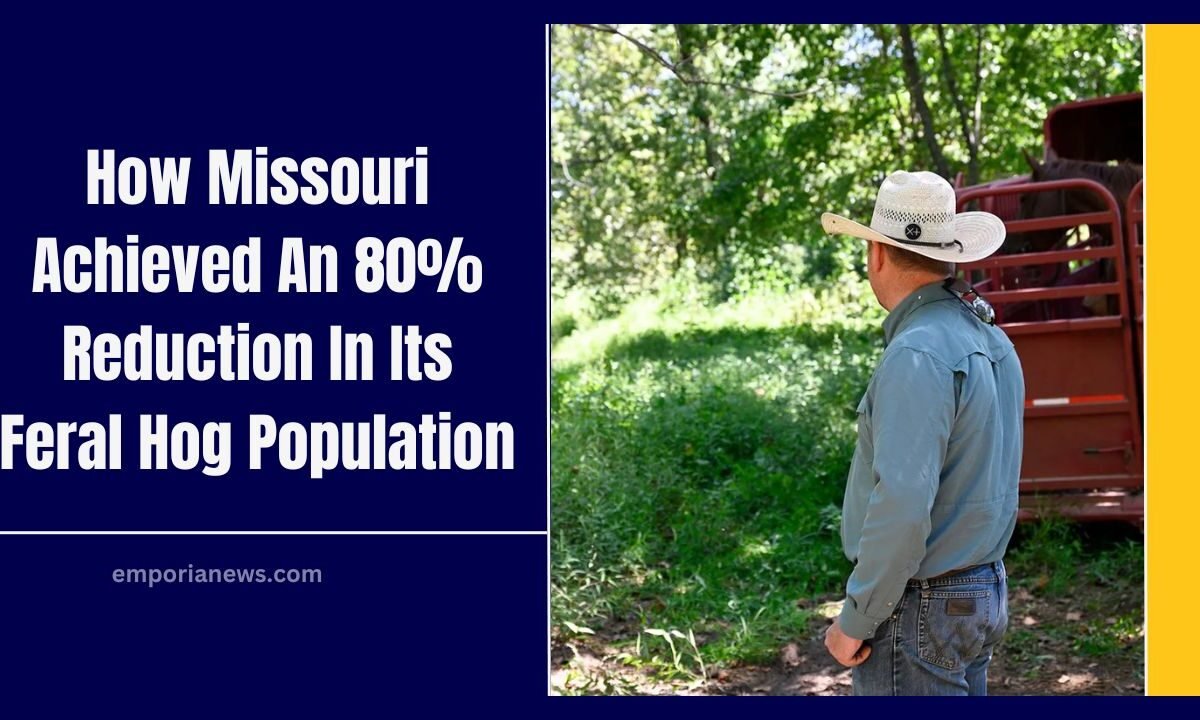Missouri has accomplished what many states are still struggling to achieve—reducing its feral hog population by an astounding 80%.
Once a devastating threat to crops, forests, and native wildlife, feral hogs caused millions in agricultural damages annually, tearing up fields and destroying ecosystems.
Through the Missouri Feral Hog Elimination Partnership, a collaborative effort spearheaded by the Missouri Department of Conservation (MDC), the state has made unprecedented progress toward total eradication, proving that large-scale invasive species control is possible with the right strategy.
From Millions of Acres to a Fraction
According to Alan Leary, MDC’s feral hog coordinator, the area of Missouri occupied by feral hogs has dropped from 11.2 million acres in 2016 to 2.9 million acres by mid-2025. That represents an 80.4% decrease in range coverage within less than a decade.
| Year | Acres Occupied by Feral Hogs | Change |
|---|---|---|
| 2016 | 11.2 million | — |
| 2020 | 6.5 million | ↓ 42% |
| 2023 | 3.7 million | ↓ 67% |
| Mid-2025 | 2.9 million | ↓ 80.4% |
This sharp decline reflects coordinated trapping operations, aerial removal campaigns, and extensive monitoring that have reshaped Missouri’s landscape.
The Economic Toll That Sparked Action
Farmers were among the first to push for an aggressive solution. Feral hogs can destroy entire crop fields overnight, costing hundreds of thousands of dollars per farm each season.
Jeff Reed, a Wayne County cattle producer and president of the Missouri Cattlemen’s Association, initially doubted the state’s strategy. In 2017, he had nearly 400 feral hogs on his property, devastating his corn yields.
- Expected yield under irrigation: 180–200 bushels per acre
- Actual yield with hog damage: 30 bushels per acre
Today, thanks to MDC’s coordinated effort, Reed says he sees only one hog every couple of weeks, a dramatic turnaround from the daily destruction he once faced.
High-Tech Tools and Multiagency Collaboration
The Missouri Feral Hog Elimination Partnership relies on a network of agencies, technology, and strategic planning. This includes:
| Method | Description |
|---|---|
| Trapping | Large corral traps capture entire sounders (groups) at once |
| Drones | Spot hog movements and relay GPS coordinates to field teams |
| Helicopters | Rapid response for aerial removals in dense or rugged areas |
| Ground Teams | On-site follow-up and habitat restoration after removals |
Drones collect GPS coordinates and send them to helicopter crews, who then remove the hogs from hard-to-reach terrain, making it a highly efficient eradication system.
Leary advises landowners not to hunt feral hogs individually, as shooting only a few causes the rest to scatter, making them harder to trap and allowing them to reproduce quickly.
Public Participation and Reporting
Missouri landowners play a crucial role by reporting sightings and damage. Instead of shooting, they are encouraged to call MDC at 573-522-4115 ext. 3296 for coordinated removal efforts.
This centralized reporting system ensures rapid response, keeps sounders intact for complete removal, and prevents the population from bouncing back.
Missouri’s 80% reduction in feral hog population is a landmark achievement, showing that well-coordinated, science-driven eradication efforts can reverse even severe infestations.
By combining technology, multiagency collaboration, and community cooperation, Missouri is now closer than ever to total elimination of feral hogs, safeguarding its farms, ecosystems, and rural economies for the future.




